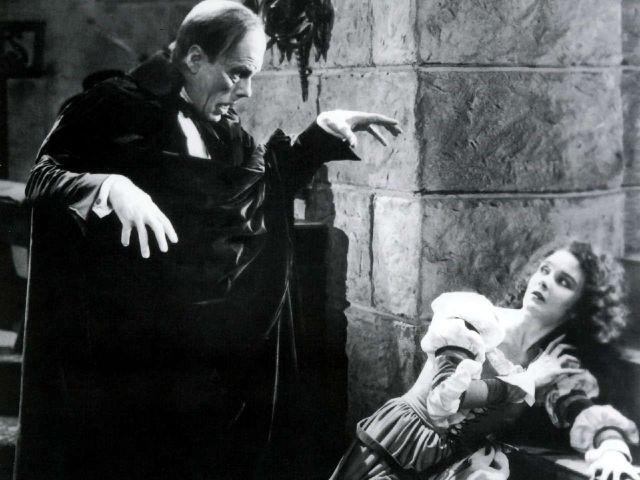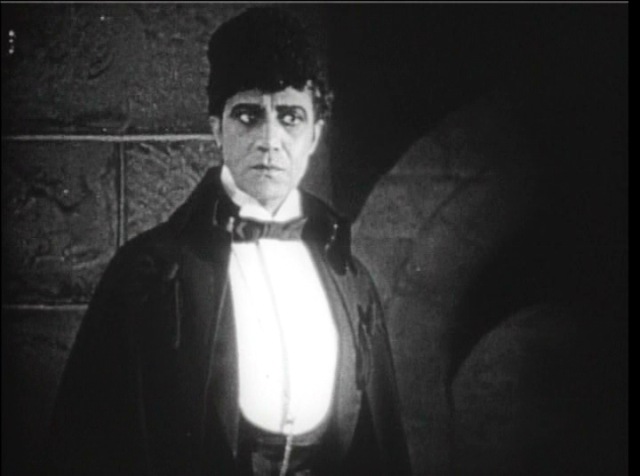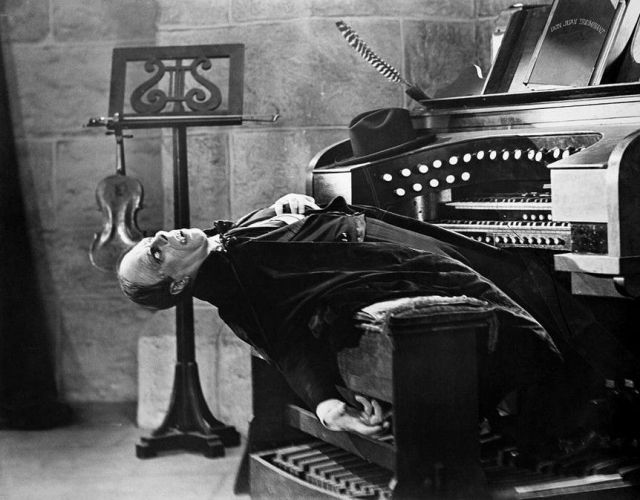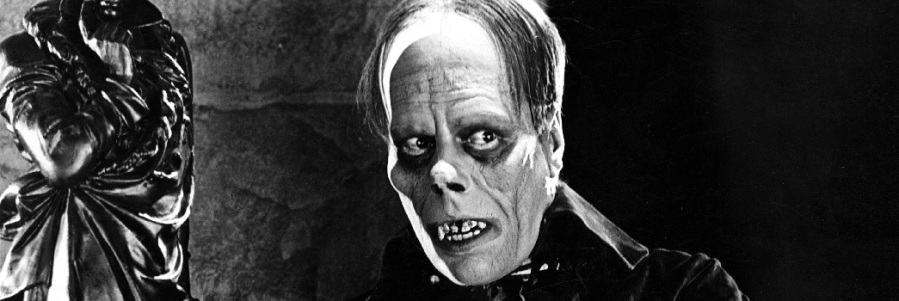For most people, the 1925 adaptation of The Phantom of the Opera is the first time Gaston Leroux’s novel reached the big screen. While a Russian film based on the novel did come out in 1916, it is now a historical footnote as no copies of that movie survived to the modern era. Thus, for our discussion of The Phantom of the Opera and its many adaptations, we have to skip over the first one and go right to the 1925 silent film starring Lon Chaney.
The Brilliance of Chaney, Revealed
As an adaptation, the 1925 silent film does have a few missteps. The titular antagonist is reduced from a complex, needy, but very damaged individual to an escaped criminal. The story is shorter and less nuanced due to the constraints of the medium at the time. But in terms of accuracy to Leroux’s original novel, this film is the closest there is. Moreover, the costumes and sets stand up favorably to just about anything you’ll see even in the modern day. The latter is likely due to a whole team of individuals who collaborated to make some truly breathtaking (for the time) sets. The former is almost exclusively thanks to the brilliance of Lon Chaney.

The key to the story of The Phantom of the Opera is that Erik, the phantom, is hideous. Not just an ordinary ugly duckling, but truly horrifying. He has a hole where his nose is supposed to be. His eyes can only be seen in the dark, when they shine like a cat’s. He has the cold feel of death about him. He sleeps in a coffin.
Although he was born human, Erik is every bit as much a monster as the creations of Jekyll or Frankenstein. That’s where the ultimate tragedy of the story comes from – the Phantom is totally insane and downright homicidal due to the fact that no one, up until Christine Daae, ever showed him any sort of affection.
As time went on, Erik became increasingly handsome in these adaptations. It started with the 1943 film we’ll go over next time, when the role was taken up by the charming Claude Rains. It really picked up steam after Andrew Lloyd Webber’s musical came out, in which the Phantom only wore a half-mask. To be fair to the musical, though, they tried staying true to the look of the character from the novel, but doing so would have required five hours of makeup time and limited the vocal range of the actor, which is kind of an important thing for a stage musical.
Films have less of an excuse, since there is more prep time and the ability to dub in singing, but I’ll take my shots at later movies in the future. The point here is that in an ideal adaptation of the novel, the Phantom has to be truly, frighteningly ugly. And, due to several changes in the story and constraints of various media, only this film got that look right. Lon Chaney was a master of theatrical makeup and came up with a man who really did look like he had a death’s-head for a face.
At the time of the movie’s release, it was suggested that theatres keep smelling salts on hand. This was not mere publicity – reports described people actually fainting during the classic unmasking scene when we first saw Erik’s face.
By really showing off the Phantom’s ugliness, we see the dilemma presented in the story. Were he merely somewhat ugly or mildly disfigured, then all those who feared him become the villains – they should have overcome their prejudices. But since he looks like a living corpse, the audience feels a portion of the revulsion the characters in the film do. Chaney’s makeup connected the audience to the story’s tragedy – no one can blame people for fearing Erik, but that natural reaction is exactly what drove a gentle soul to a life of evil.
Narrative Changes
In terms of story, the 1925 film follows the plot of Gaston Leroux’s novel pretty faithfully, but it makes a few key changes. Some of these changes were beneficial to future adaptations, others which were not.

The biggest change was a switch around in narrative structure that brought the Phantom in early and often. Leroux’s novel focused mostly on the Opera Ghost as a legend and concerned itself with the mystery behind Christine Daae’s sudden surge in talent and bizarre performance. We didn’t get the famous scene of the Phantom whisking Christine away into the labyrinthine opera until more than halfway through the story, and even then it was in flashback. To me, the original story doesn’t get off-the-charts good until about two-thirds of the way through, when the Persian is introduced and we really explore Erik’s madness. That kind of pacing would be terrible in a movie, and so the film introduces Erik much earlier and deals more intensely with his relationship to Christine. This change in pacing would become the standard in future adaptations.
The novel was written as a historical account, with the narrative providing many sources, ranging from sworn testimony by Raoul to the detailed journal entries from the Persian. Despite the pretense of the story as historical text, the novel includes a lot of dialogue and prose-style point of view scenes that would be absent in a real history piece. Despite that, there’s just enough of a veneer of academic writing to make the reader accept it as something other than a novel – in essence, the readers allow Leroux to trick them. Sadly, that sort of complexity doesn’t translate into the visual medium well, so we get this film in a more objective, traditional film style. That’s a not a bad choice – it’s just one of those ways that an adaptation just can’t compete with the original.
Again relating to the pacing, some of the more minor scenes from the novel get turned into dramatic set-pieces in the film. The masked ball, for example, had the Phantom walking around as the Red Death in the novel, but it’s made a much bigger deal here, with the Phantom threatening people and the entire film tinted red to reflect his costume choice. This change was partly influenced by film technology at the time, which allowed for the entire ball scene to have a red tint. Color tinting at the time, was a common way to spice up black and white film.
Erik the Card-Carrying Villain
The place where I think this film really fumbles the ball is the end. In the novel, the Persian appears to fully explain Erik’s backstory and instill a sense of sympathy toward the mysterious Opera Ghost. The film, on the other hand, replaces the Persian with Inspector Ledoux and dispenses with the tragic backstory, instead stating that Erik is an escaped criminal mastermind from Devil’s Island.
This had a knock-on effect of removing Erik’s tragic fate. While the original ending had the Phantom die of a broken heart in a similar manner to the original story, having such a peaceful ending for the villain didn’t play well, resulting in a chase scene that is very much at odds with the tone of the rest of the film.

While I wish the studio had stuck with the original ending, I do have to admit that Erik’s death scene is pretty fun to watch. With a mob closing in on him, he holds up something in his hand. Not sure what it is, the approaching mob backs off. Maybe Erik could have gotten away, but then he opens his hand to reveal…nothing. He gives a mad laugh before being thrown to his doom in the Seine River. Why he gave himself up when he might have gotten away is a matter for discussion and speculation, and it sticks with me even though to took less than five seconds on film. It’s also worth noting that Chaney’s mad laugh is something you can practically hear despite this being a silent film.
Overall, the 1925 film falls short of the original story, mostly due to the fact that the filmmakers cut out most of Erik’s sympathetic features. But overall, it’s definitely a film classic that stands up well even in the modern day.
Next time, we’ll move into the realm of talkies and discuss my man-crush on Claude Rains, despite the fact that the adaptation featuring him as the Phantom probably did more harm than good to the franchise.
Images: Jewel Productions
